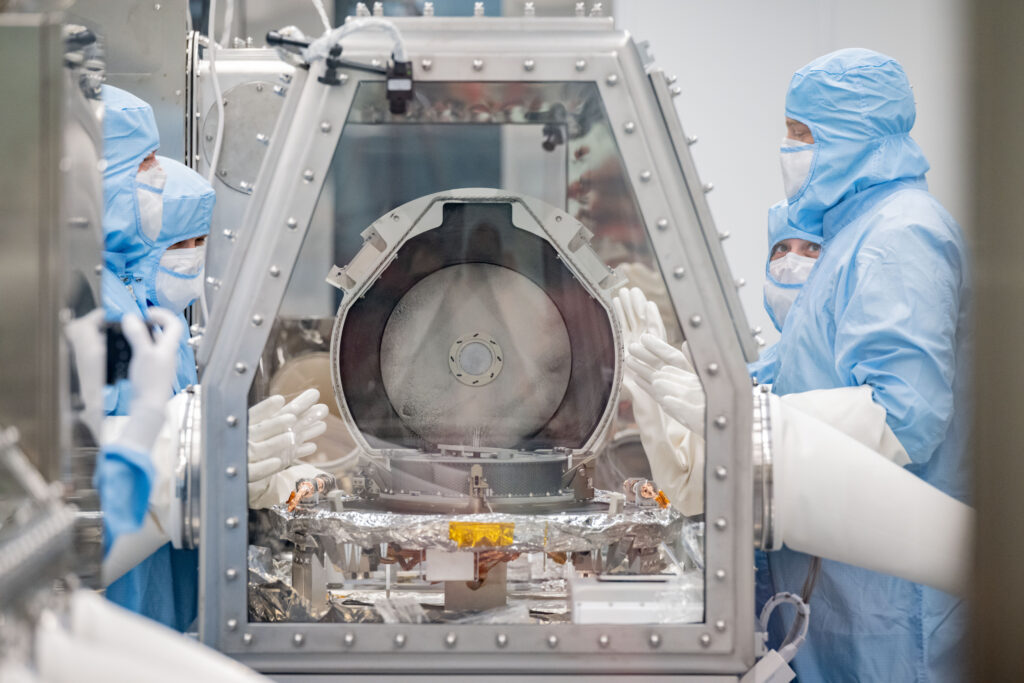
Two and a half months after a capsule containing samples from the asteroid Bennu parachuted into the Utah desert, NASA is still struggling to open the box of precious alien material.
Two of the 32 screws that held the OSIRIS-REx mission’s samples were impossible to remove, and the agency announced that efforts are on hold until new screwdrivers are designed, possibly early in the new year.
At the Johnson Space Center, where the samples are kept, technicians were able to collect only the black dust that had collected outside the canister, in addition to some of the contents that they were able to pull out with tweezers.
Using tweezers, technicians were able to remove some of the material (NASA)
In total, they collected and examined 70 grams of material – dust and gravel – but they believe there is much more waiting inside the sealed chamber.
The OSIRIS-Rex capsule parachuted into Utah on September 24. (NASA/Keegan Barber)
Asteroids can provide important information about the evolution of the solar system, as they were created using material left over from planetary formation 4.6 billion years ago.
Until now, Japan has been the only country to bring samples of such an object to Earth.
Penny’s diameter is about 500 meters (NASA)
The first analyzes of material from Bennu, which OSIRIS-REx visited in 2020, revealed large amounts of water and organic molecules — a preliminary discovery that appears to bolster the theory that asteroid impacts brought the ingredients for life to Earth.
The researchers hope that the new data will also help understand the nature of asteroids that could one day threaten Earth.
Bennu itself is considered a “potential risk,” with NASA estimating a 1 in 1,800 chance of the asteroid hitting Earth sometime in the 22nd century, with the risk peaking on September 24, 2182.

“Total alcohol fanatic. Coffee junkie. Amateur twitter evangelist. Wannabe zombie enthusiast.”





More Stories
Is this what the PS5 Pro will look like? (Image)
Finally, Windows 11 24H2 update significantly boosts AMD Ryzen – Windows 11 performance
Heart Surgeon Reveals The 4 Things He ‘Totally Avoids’ In His Life